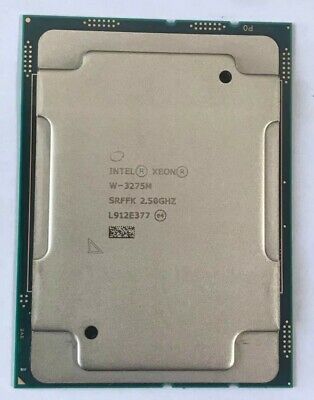can you post the link to your seller, i would be interested in purchasing it!
I got from

Intel Xeon W-3275M 2.5GHz 28Core LGA3647 CPU For Mac Pro 2019/HP Z6 G4 NOT ES/QS | eBay
Find many great new & used options and get the best deals for Intel Xeon W-3275M 2.5GHz 28Core LGA3647 CPU For Mac Pro 2019/HP Z6 G4 NOT ES/QS at the best online prices at eBay! Free shipping for many products!
www.ebay.com



